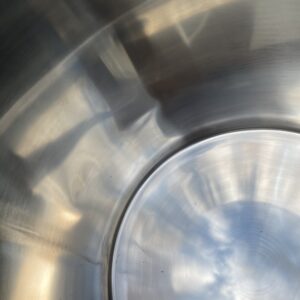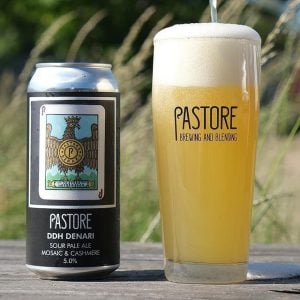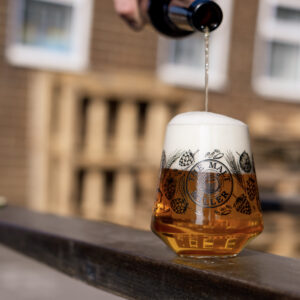Getting started with mixed fermentation
Mixed fermentation means using more than one kind of yeast, or deliberately adding bacteria to your beer to create new flavours. Some of the most prized and sought after beers in the world are made with mixed fermentation, and we want to encourage more homebrewers to try their hand at these techniques. So here’s our simple guide to getting started with mixed ferm!
In the mix

Mixed ferm is a technique, like dry hopping or step mashing, rather than a particular style of beer. You can use mixed fermentation in loads of beers, from IPAs to stouts, but one of the most common uses is to create tart or sour beers.
Many brewers (and beer drinkers) are used to sourness meaning the beer has gone off, and when it’s unintentional that can definitely be the case. But in a deliberately soured beer, the acidity and tartness can be refreshing and delicious. Sourness is a flavour, so just like any flavour you need to have it in the right context. Cherries make a lovely fruit pie, but you wouldn’t want to find them in a cottage pie…
Keep it clean
One of the things that can put brewers off mixed ferm is keeping the other yeast and bacteria out of your “normal” beers – to avoid cherries in your cottage pie! A simple way to do this is to have separate fermenting kit for your mixed ferm beers, particularly any plastic equipment. However, this can get quite expensive, so it’s understandable if this isn’t an option.
If you have stainless steel equipment, this is quite easy to clean to avoid any contamination. The main yeasts and bacteria used in mixed fermentation – Brettanomyces, Lactobacillus, and Pediococcus – are all killed by heat, so you can remove any trace of them from steel equipment with simple boiling water. For smaller pieces, you could put them in a dishwasher set to a high heat setting: the steam will do a great job. Clean any equipment with high heat immediately after use, then repeat before using the next time, and you should avoid any issues. If boiling water is impractical, anything above 70°C will pasteurise the equipment – just keep the equipment in the heat for a little longer.

Meet the bugs
We mentioned a couple of mixed ferm yeasts and bacteria above. Let’s get to know the family…
This is “normal” yeast. Ale yeasts, lager yeasts, and kveik are all varieties of Saccharomyces. You would typically use a Sacc strain to do the bulk of fermentation in a mixed ferm beer, with the other yeasts and bacteria there to add flavour.
Also known as “Brett” for short. This is a yeast that can take years to finish fermentation, and excels at eating sugars Saccharomyces can’t digest. For this reason, Brett is typically used as a secondary yeast. It can produce a massive range of flavours, from tropical fruit all the way to hay, barnyard funk, and even leather. Beers made with Brett will often evolve as they age. Some strains of Brett can complete primary fermentation by themselves, though they take longer to finish than Sacc strains.
This bacteria is the same you find in yoghurt or sour cream. It eats simple sugars and produces lactic acid, but it can’t digest complex malt sugars so you need to use a yeast to complete fermentation. As Lactobacillus grows it makes the beer around it more acidic, and it can tolerate very high levels of acid, so to eliminate it from your brewing equipment you need to use high heat (alkaline cleaners can help along with the heat). Lactobacillus can only stand 10 IBU or less of hops, and will not grow above these levels.
Another kind of lactic acid bacteria, this eats complex malt sugars and can take months to do its work. While it’s working, it can produce a protein that makes the beer thicker and more viscous. Brett is very good at eating through this “ropey” quality so Pediococcus is typically used alongside Brett. Like Lactobacillus, Pediococcus doesn’t like hops, and won’t grow where there’s more than 10 or so IBUs in the beer.
A unique kind of yeast that ferments like Saccharomyces but also produces lactic acid bacteria. Unlike Lactobacillus and Pediococcus, Philly Sour doesn’t mind hops, so you can use it with very hoppy styles – though be careful, as high levels of sourness and bitterness don’t play well together.
Three ways to get started
Here are three simple recipes to get going with mixed fermentation!
Pastore Brewing – DDH Denari

Put together specifically for us by Pastore Brewing, this is a sour IPA, which makes it a perfect introduction to mixed ferm for brewers more accustomed to hoppy styles. The recipe uses a cunning blend of Lactobacillus for souring and kveik for the main fermentation. The high-speed primary ferment from the kveik works to control the souring from the Lactobacillus, meaning it stays beautifully tart without getting puckering. Plus there’s gorgeous hop aromatics from Cashmere and Mosaic.
This beer can be enjoyed as fresh as you like to get the best from the dry hops, so you get mixed fermentation without the wait!
Vine – dry hopped Brett saison
This recipe was put together by us at The Malt Miller and it makes for a brilliantly refreshing and fresh-tasting beer, as well as being a simple introduction to both kettle souring and Brett fermentation. Kettle souring is a technique where Lactobacillus is used to add sourness, then killed off by boiling the wort. This means you can then add hot side hops without this inhibiting the Lactobacillus, as well as giving you the comfort of knowing the boil has destroyed the bacteria and pasteurised your wort.
The kettle souring is followed up by fermentation with Nelson Sauvin hops and Brett yeast. The Brett is slower than Saccharomyces but does magical things with the hops, transforming the flavour into apple, pear, and white wine!

Simple Solera
A solera is a way of having a continual supply of mixed fermentation beer on hand. To make a solera, you first ferment out a batch of beer and allow it to age with Brett and mixed ferm bacteria. Then, every six to twelve months, you draw off between a third and a half of the finished beer, and top the batch up with freshly made beer.
We’re working on a special guide to soleras – watch this space!
Check out our video on mixed fermentation, with amazing tips from Dan Wye, Lead Brewer at Pastore Brewing.
Don’t forget to subscribe to our YouTube channel for all the latest brews and reviews from The Malt Miller. Cheers!

